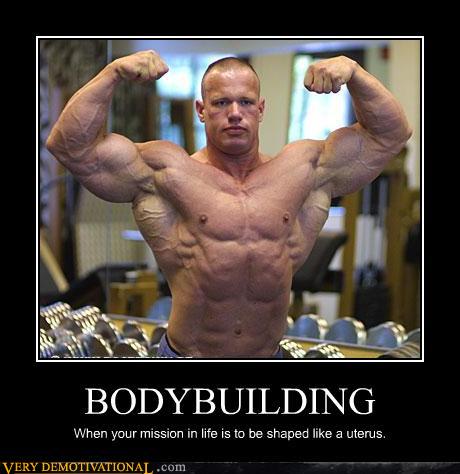Deadlifts and Disc Herniations: Part 2
So for those of you who missed part one of this epic series, do yourself a solid and check it out HERE. Everything I write from here on will make a hell of a lot more sense if you do.
SO now that we’ve worked on the requisite spinal stability and hip mobility, we can start to groove the pattern of the deadlift itself. Dr. Stuart McGill says that the grooving of a movement pattern is essential to make sure the movement is as technically sound as possible and limit the chances of getting re-injured. And as much as I like lifting heavy shit off the floor, then placing it down ever so gently, I would rather have someone lift something perfectly, and then get them to learn to lift it heavy. Plus, nothing will make the average meathead scratch their head in confusion like answering their buddy buddy question of “Hey, watcha workin’ there dude?” with an answer like “grooving the deadlift pattern.”
So now that we can groove the pattern, there are a few necessary coaching cues to be aware of at all times:
1. The ability to maintain lumbar lordosis is absolutely the most important factor. Once it’s lost, the movement is over. Re-set and try it again. No exceptions.
2. The scapula must be retracted and depressed, tucked into the back pockets if you will, to shorten the lever arm length from the shoulder to the lumbar spine, and to also contract the lats to help protect the lumbar spine and SI joint.
4. All movements begin at the hips, and require a neutral pelvic position with no anterior tilt. Posterior tilt is alright, but don’t tell anterior, or he’ll think it’s some kinda discrimination thing and get all upset about it.
5. Pain stops everything
Once these conditions are driven home, the first stages of deadlifting can begin.
Exercise One: Zero Bottom Pulls
When beginning the movement, the most susceptible position to re-injury will be the bottom of the movement, where the spine is more likely to enter lumbar flexion and has the greatest shear force on it. For this reason, some form of progressive resistance works amazingly, however it may present some difficulties to do band pulls or chain lifts from the floor with a conventional lift as the positioning may be too low to tolerate. Even a trap bar may be too low to the ground for someone with disc issues. Enter the baddest mofo of a deadlift variation ever created!!!
Why it kicks ass: The bottom of the movement has the cables pulling horizontally, which makes the downward force the back is exposed to essentially zero. As you pull up, the angle of the cables moves from horizontal to vertical, meaning the vertical force increases exponentially as the bar is lifted, making the movement have the greatest resistance at the top and none at the bottom. This works really well when trying to re-groove the deadlifting pattern and to make sure the range of motion of the hips and stability of the spine isn’t lost with additional resistance. On top of that, the cables can be adjusted to any height, width, or resistance required up to 150 pounds (in this case), and after that anyone should be able to progress to band pulls, sumo deadlifts or rack pulls.
Exercise Two: Cable Pull Throughs
I started experimenting with this one after reading some of the work Mike Robertson has come out with on them, and found them to be an amazingly effective way to target hip extension while limiting the shear force on the spine through the entire range of motion. That, and if you do them right they make it a great training technique for anyone looking to engage in some naked-time fun and happiness. But I digress.
Why it kicks ass: Because the resistance is pulling horizontally, even when fully bent over the shear force on the spine is limited. This, combined with the fact that the glutes have to work through the entire movement, combine to create a great training stimulus for the low back. Caution should always be taken when considering the placement of the cables and any “pinching” that may result. Hit it a little too high and your kids may be born with a headache.
Exercise Three: Barbell Hip Press
As mentioned in part one, training the glutes to fire into extension is redonkulously important for getting a strong back, and none targets the glutes quite like this bad mamma jamma.
Why it kicks ass: Aside from the fact that every single female in the place will be thinking thoughts as you thrust away with copious amounts of weight on your groin, it allows you to fully load your glutes without causing any spinal compression, shear or torque. This makes it the perfect kind of exercise to make you still train like a bad ass without screwing up your back further.
Exercise Four: 1-Foot Cable Squat & Row
This is probably on my top ten list of favorite all-time exercises, whether someone has a back injury or not. I mean, it’s just so COOL!!!
Why it kicks ass: Now aside from me just coming to the realisation that we haven’t changed our music in roughly a year (You have no idea how much it sucks to have to listen to Sheryl Crowe’s The First Cut is the Deepest at 6:14 every morning!!!), this exercise is fantastic because it forces proprioception through the ankle, knee, hip, spine and shoulder all at the same time. Also, as discussed in Muscle Imbalances Revealed, it trains the spiral fascial line, which is extremely important in low back pain management and strength training by working on the glute and contralateral lat at the same time. It’s so sneaky, it’s like a ninja in your workout shorts.
So this is a quick and dirty stage 2 program for a disc herniation looking to get back into deadlifting. While we haven’t really gotten a chance to go into the actual deadlifting as of yet, I figured I had to leave something for a third installment, which is all set for tomorrow. We’ll look at covering deadlifting progressions as well as some of the necessary accessory movements to train in order to make sure the area becomes as strong as possible. I’m going to let you in on a little secret: it’s gonna be more fun than a rabbit wearing a pancake!!
Until then, keep fit and have fun. Sorry, couldn’t resist.

